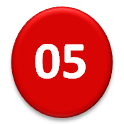By just being a markup language HTML is arguably easier to learn than formal scripting and programming languages. However, I had not had much of a traction with it over the years, other than few basic notions, just enough to conjure up the most basic of web pages. On my latest attempt at it the panorama has cleared thanks to Andy Harris' hot off the press HTML5 and CSS3 All-in-One For Dummies.
The book is just what I had been looking for: current with the newest standards, step by step, and uncontrived. At this point in time HTML and CSS have been polished enough to remove some of their worst warts leaving more logical cleaner languages which makes this a great time to learn. Harris' approach, in the Dummies tradition, builds from scratch both keeping the curve a level as possible and focusing on what one is likely to need to build solid, attractive webpages and move on to more advanced material if one wishes, and does not attempt to be exhaustive. His writing, code and extra material makes it easy to follow along.
My previous best attempt last year was with Tittel's HTML, XHTML and CSS For Dummies (6th) which I felt spiked the learning curve somewhere around the CSS section and left me not learning much if anything and discouraged. This time around I also dabbled with HTML5 and CSS3 for Dummies by Karlins and CSS3 for Dummies by Mueller but kept coming to Harris's as my guide. And things have changed since last year: with my newfound knowledge for the first time I now understand some of the aspects of my own blog and have quite quickly started editing here and there with confidence.
The 8 in 1 aspect consists in 8 'minibooks' under one cover. The 8 minibooks are:
- Creating the HTML foundation (98 pages)
- Styling with CSS (116 pages)
- Building layouts with CSS (90 pages)
- Client-side programming with Javascript (174 pages)
- Server side programming with PHP (126 pages)
- Managing data with MySQL (106 pages)
- Integrating the Client and Server with AJAX (150 pages)
- Moving from pages to sites (86 pages)
The only thing that might be a minus is it's the size of the printed book which is over a thousand pages long. I borrow an e-version from my local library and read it with the Adobe Digital Editions reader, so you might want to consider that as well. Note too that it not exhaustive: you won't find everything, but you'll also not get overwhelmed by the material. To me that's a plus.
I'm not sure If I'd recommend it to someone who isn't comfortable with computers to begin with; for someone who has a reasonable motivation it will fit hand in glove.
 |
| 4 stars |
 I want today to give
a shoutout to the Comet B68 chess engine. Might not be the best or perhaps not even
among the top 100, but its peculiarities makes it an estimable companion for
endgame training.
I want today to give
a shoutout to the Comet B68 chess engine. Might not be the best or perhaps not even
among the top 100, but its peculiarities makes it an estimable companion for
endgame training. 









